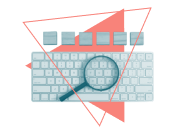What’s Next? Marketing Through Tariff Wars and Sky-High Prices
Key Points
-
People don’t need more offers — they need stability. In times of uncertainty, brands that lead with reassurance, transparency, and empathy build deeper trust and longer-term loyalty.
-
Segmentation is no longer optional — it’s survival. To stay relevant, your funnel must reflect shifting buyer emotions. Use behavior and intent signals to tailor your message with clarity and care.
-
Simple funnels with clear choices convert better. When attention is low and anxiety is high, people choose the brand that makes things easier, faster, and feels like a safe decision.
Last week over coffee, a friend asked me a question I’ve been hearing a lot lately:
“What do we do now — when everything is getting more expensive, and clients are freezing budgets left and right?”
We weren’t just talking about inflation. We were talking about the ripple effect of new tariff wars, pricing volatility, and global uncertainty.
And if you’re a marketer or business owner trying to navigate this — you’re probably feeling the pressure, too.
The platforms are getting noisier. Customer attention is more expensive. Margins are getting squeezed. Your team is tired of being told to “do more with less.”
So what actually works right now?
This isn’t the time for fluffy advice. It’s time for clear thinking, sharp segmentation, and adaptive strategy — built on a solid understanding of how pain points shift during economic stress.
Let’s unpack what you need to know.
A Quick Reality Check: What Tariff Wars Actually Do
Tariffs are taxes imposed on imported goods.
When countries retaliate with new tariffs, it creates higher costs across industries — not just for the importers, but for end-consumers too.
This ripple hits marketing in multiple ways:
- Advertising costs rise as industries flood search and social to compete;
- Customer hesitation increases as price sensitivity spikes;
- Brand loyalty wavers when cheaper alternatives seem more appealing.
Sound familiar?
History has shown us this before. In the early 2000s, tariff shifts between the U.S. and China caused sudden price jumps for electronics and raw materials.
Brands that survived weren’t just the cheapest — they were the clearest and most emotionally aligned with their customers.
What’s Really Changing: Buyer Psychology
When prices rise and uncertainty spreads, two things happen:
- People delay decisions. They keep tabs open, revisit carts, and wait for a “better time.”
- They seek clarity and confidence. The business that explains better, calms their fears, and offers options will win.
That means your content, funnels, and offers need to shift accordingly.
Step One: Shift from Selling to Stabilizing
Right now, buyers don’t need to be sold to — they need to feel safe.
Start with empathy, not urgency. Instead of “Act fast! Limited time!”, try:
- “We’ve adjusted pricing to give you flexibility.”
- “Here’s what to do if you’re unsure how tariffs impact your order.”
- “A guide to getting the most value right now.”
This reframing builds trust.
✅Example: A client in the home improvement space added a simple tariff-explainer to their product page. It acknowledged supply issues and outlined options. Result? Lower bounce rates and more qualified leads.
Step Two: Segment Harder Than Ever
Segmentation isn’t a trend — it’s survival.
Now is the time to double down on understanding your customer groups:
- Who’s still ready to buy?
- Who needs longer nurturing?
- Who’s paused — but still watching?
Use behavior triggers:
- Email opens but no clicks? Offer insight, not discounts.
- Repeated cart visits? Send a reassurance message about pricing or delivery.
- No engagement at all? Try a low-stakes reactivation campaign.
✅Pro Tip: Pair AI insights with your CRM to group leads by emotional state: anxious, hesitant, curious, committed.
Step Three: Simplify Your Funnel
Right now, overcomplicated funnels just leak trust.
Shrink the path:
- Clarify your offer;
- Shorten forms;
- Cut fluff from nurture emails.
People are tired. Give them ease and clarity, and they’ll reward you with conversion.
Framework to use:
- Relevance — “This is made for me.”
- Clarity — “I understand the value.”
- Stability — “This brand feels solid even now.”
- Options — “I can choose what works for my budget.”
Step Four: Use History as a Mirror
In past downturns and high-tariff periods, the brands that stood out:
- Educated rather than pushed
- Adapted faster than others
- Built community, not just campaigns
Take a page from Patagonia in the 2008 recession. While many cut back, they leaned into storytelling, transparent pricing, and sustainability messaging.
Their customer base grew — not because of lower prices, but because of deeper values alignment.
That’s your playbook now.
Step Five: Don’t Stop Marketing — Just Shift the Energy
This is not the time to go dark.
This is the time to:
- Show up with consistency;
- Talk like a human, not a headline;
- Address what your audience is actually worried about.
Examples of high-performing content right now:
- “How to manage rising costs in [your niche]”
- “What new tariffs mean for your [product] delivery”
- “The smartest way to stretch your budget with [your solution]”
If you’re reading the forums and Slack groups, if you’re listening to the late-night Google searches — you already know what they’re asking. Build from there.
Final Thought: Your Role Is to Reframe, Not Just React
The businesses that will survive this next wave aren’t the cheapest or the loudest. They’re the ones that:
- Truly understand shifting buyer psychology;
- Build safety and trust into every step;
- Stay grounded, even when everything feels unstable.
As a marketer, your job is to reframe the chaos into clarity.
To create grounded offers. To segment smarter. And to keep showing up when others panic.
That’s not just good marketing. That’s leadership.
Let’s do more of that.




















